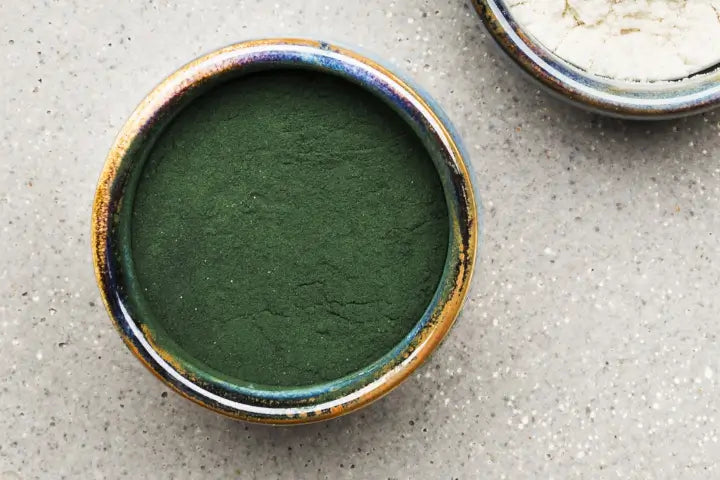Spirulina Powder Explained: A Complete Look at This Nutrient-Packed Superfood

Spirulina powder is a fine, blue-green algae supplement derived from microscopic cyanobacteria that thrive in freshwater lakes and controlled cultivation ponds. Lauded for centuries—and increasingly in modern wellness circles—as a superfood, this nutrient-dense powder boasts an array of vitamins, minerals, and unique phytonutrients. This article offers a deep dive into the origins, cultivation techniques, detailed nutritional profile, health benefits, safety considerations, selection criteria, and culinary applications of spirulina powder. By the end, readers will understand how this versatile algae can enhance overall well-being while navigating potential risks and quality factors.
Origins and Cultivation
Historical records indicate that ancient civilizations—such as the Aztecs and tribes around Lake Chad—harvested spirulina algae from local lakes as a protein-rich food source. Fast forward to the 20th century, and commercial farming practices refined the process of growing, harvesting, and drying these cyanobacteria in temperature-controlled, nutrient-enriched ponds.
- Historical uses: Aztecs baked spirulina into cakes; African communities dried it into “dihé” cakes.
- Modern farming: Utilizes closed bioreactors or open raceway ponds to optimize light, pH, and nutrient delivery.
- Wild-harvested vs. farmed: Wild-harvested varieties may vary in purity; farmed spirulina undergoes rigorous quality checks to minimize contamination.
While some refer to this supplement as the Blue Spirulina plant, it’s essential to note that spirulina is actually a cyanobacteria rather than a true botanical specimen.
Nutritional Profile
Spirulina algae stands out for its dense nutrient content per gram, making it a favorite among plant-based protein seekers and nutrient strategists alike.
| Nutrient | Per 7 g (1 tbsp) |
|---|---|
| Protein | 4 g |
| Carbohydrates | 2 g |
| Healthy Fats | 1 g (including GLA) |
| Calories | 20 kcal |
Key Vitamins and Minerals
- B-complex vitamins (B1, B2, B3, B6, B9)
- Iron (plant-based, well-absorbed)
- Magnesium and calcium for bone health
- Potassium and zinc in trace amounts
Phytonutrients and Pigments
- Phycocyanin: a unique blue pigment with antioxidant activity
- Chlorophyll: supports detoxification
- Carotenoids (beta-carotene, zeaxanthin) for eye health
Beyond basic nutrition, many enthusiasts cite blue algae powder benefits—such as its concentrated pigment-driven antioxidants—and the broader Blue spirulina powder benefits tied to immune support.
Health Benefits
Examining the array of Spirulina benefits and side effects reveals that, while side effects are rare at quality levels, the health gains are compelling:
- Immune System Support and Modulation: Phycocyanin and polysaccharides in spirulina enhance natural killer cell activity and antibody production.
- Antioxidant and Anti-inflammatory Properties: Rich in superoxide dismutase (SOD) and phycocyanin, it helps neutralize free radicals and reduce markers of inflammation.
- Cardiovascular Health: Regular intake has been linked to improved lipid profiles—lowering LDL cholesterol and triglycerides while raising HDL, fostering healthier arteries.
- Metabolic Effects: Elevated energy and endurance stem from balanced blood sugar regulation; athletes often tap into spirulina for sustained performance and reduced muscle fatigue.
Safety Considerations and Potential Risks
- Contamination Concerns: Spirulina can absorb heavy metals (lead, arsenic) or microcystins if grown in unregulated waters. Opt for brands with third-party purity testing.
- Allergic Reactions: Though rare, some individuals may experience gastrointestinal discomfort, headaches, or skin rashes.
- Interactions: May interact with immunosuppressants; those on blood-thinning medication should consult healthcare providers.
- Regulatory Oversight: Check for certifications from reputable bodies to ensure product safety and batch-by-batch purity testing.
Selecting Quality Spirulina
- Look for certification seals (e.g., GMP, USP) and organic or non-GMO labels.
- Review third-party laboratory reports to confirm absence of heavy metals and microcystins.
- Form variations: powder, flakes, tablets—choose based on convenience and desired application.
Culinary Applications and Tips
Elevate everyday recipes by experimenting with spirulina powder. Here are some quick ways to harness its benefits:
- Smoothies and Beverages: Add half a teaspoon to fruit-based smoothies for color and a protein boost. This is an easy approach to discover How to use spirulina powder without overpowering flavor.
- Baking and Cooking: Incorporate small amounts into pancake or muffin batters; blend into pesto or dressings for a nutrient twist.
- Flavor Pairing: Balance the earthiness with citrus (lemon, pineapple) or creamy bases (yogurt, avocado) to soothe the herbal undertones.
Conclusion
Spirulina powder’s remarkable nutritional density, coupled with its antioxidant, anti-inflammatory, and metabolic benefits, underscores why it continues to reign as a superfood favorite. Prioritizing quality—through certification, transparent testing, and reputable sourcing—ensures safety and efficacy. As research advances, peeling back the layers of this cyanobacteria’s potential will further illuminate sustainable nutrition trends and therapeutic avenues.
FAQs
What is spirulina blue-green algae good for?
Spirulina blue-green algae is prized for its high protein content, essential vitamins, minerals, antioxidants, and phytonutrients. It supports immune function, cardiovascular health, energy levels, and antioxidant defenses.
Is spirulina good for pregnancy?
Spirulina can provide essential nutrients like iron and B-vitamins during pregnancy, but expecting individuals should consult their healthcare provider to ensure safety and appropriate use.
Is blue-green algae the same as spirulina?
Blue-green algae is a broad category of cyanobacteria, and spirulina is one specific type within that group. Not all blue-green algae supplements are spirulina products.
Is spirulina good for eczema?
Due to its anti-inflammatory and antioxidant properties, spirulina may help alleviate skin inflammation and oxidative stress associated with eczema, though individual responses can vary.
